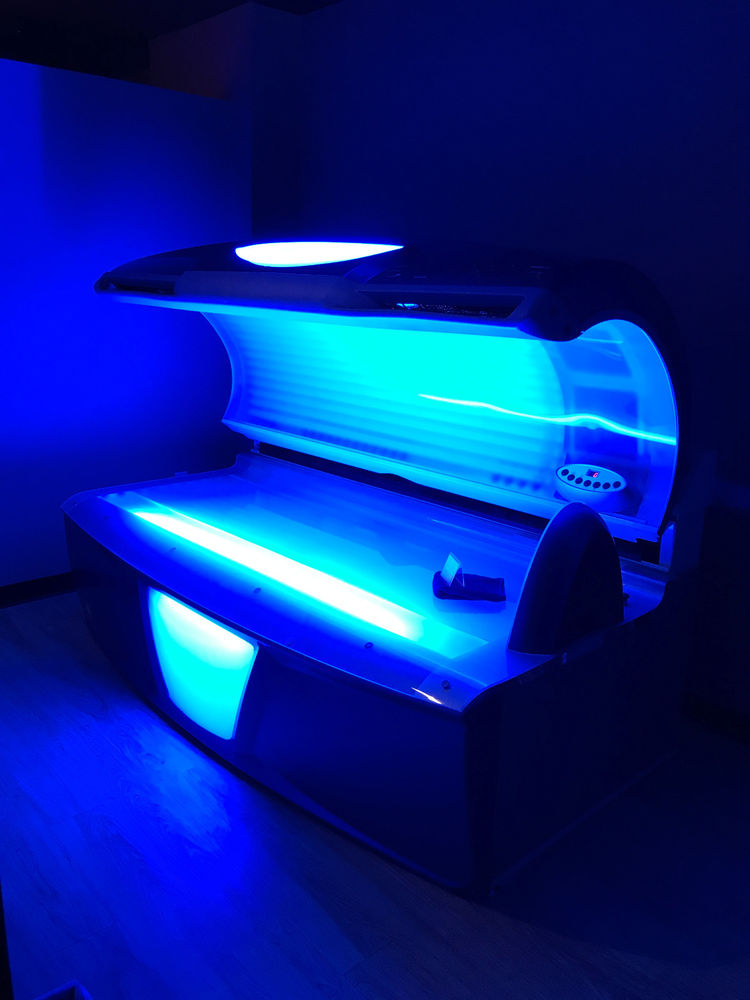10 Tanning Beds Facts You'll Want to Know!
Welcome to our mini blog! Last year we decided to come out with an additional blog towards the end of each month. These smaller blogs are fun things like quizzes, recipes, DIY ideas, and more. This month we are following up our last informational blog on SPF with this, need-to-know, tanning bed fact sheet. Enjoy!
There is no such thing as getting a base tan:
Going in a tanning bed to prep your skin before a vacation or beach trip is not going to protect you from damage or burning. UVA & UVB rays from the sun will penetrate and affect your skin just the same as if you have never gotten the “base tan”. The only true way to protect your skin from UV damage is to use SPF
Tanning beds use UVA & UVB radiation:
These harmful UV rays are the same damage and cancer-causing rays that the sun produces. Some myths claim that tanning beds are not as strong or harmful as the actual sun; this is untrue. UVA & UVB radiation not only ups your chances of developing skin cancer but also causes the skin to age prematurely.
More than 419,00 new skin cancer cases are attributed to to indoor tanning each year:
{site: Skin Cancer Foundation}
These skin cancers are divided up into three different categories. Basil cell, squamous cell, and the deadliest one of all, melanoma.
Studies show than tanning causes more cancer than smoking:
The Skin Cancer Foundation study showed that 419,000 cases of skin cancer each year are due to indoor tanning. According to cancer.org there is an estimated 228,150 new cases of lung cancer each year. This number is far less than skin cancers from tanning.
Indoor tanning can damage your eyes:
Tanning beds can produce UV light more than 50x greater than the sun. This can cause some real damage to the structure of the eye and possibly lead to problems like cataracts in the future.
Indoor tanning does not help much with vitamin D deficiency:
Indoor tanning beds mainly radiate UVA rays, which will not help your body produce vitamin D. UVB rays from the sun are more helpful in aiding our bodies to create vitamin D but the best way to get this important vitamin it through diet and foods. Vitamin D rich foods include cod liver oil, salmon or tuna, some mushrooms, and fortified milk or soy milk.
Woman younger than 30 years old are 6x more likely to develop melanoma from indoor tanning:
Many studies have show than woman under 30 are developing skin cancers more than other demographics. According to the American Academy of Dermatology 70% of indoor tanning clients are women. This could be the reason skin cancer statistics are higher for women.
Each year 1,800 people are burned badly enough to end up in the ER from indoor tanning:
A study from the Centers for Disease Control and Prevention shows this statistic. A nasty burn from a tanning bed can leave you in pain and also result in permanent scarring.
Indoor tanning beds are classified as carcinogenic:
The World Health Organization International Agency for Research on Cancer declared tanning beds a class 1 carcinogen back in 2009. Class 1 carcinogens are at the highest risk of causing cancers.
Bacterial infections can easily breed and be picked up from indoor tanning beds:
If a tanning bed is not cleaned properly, bacterias from sweat, moisture, athlete’s feet, and even fecal matter can be transferred from the tanning bed to your body. Tests on certain tanning beds have been done and bacteria have been found in some. This bacteria is not visible to the eye.





